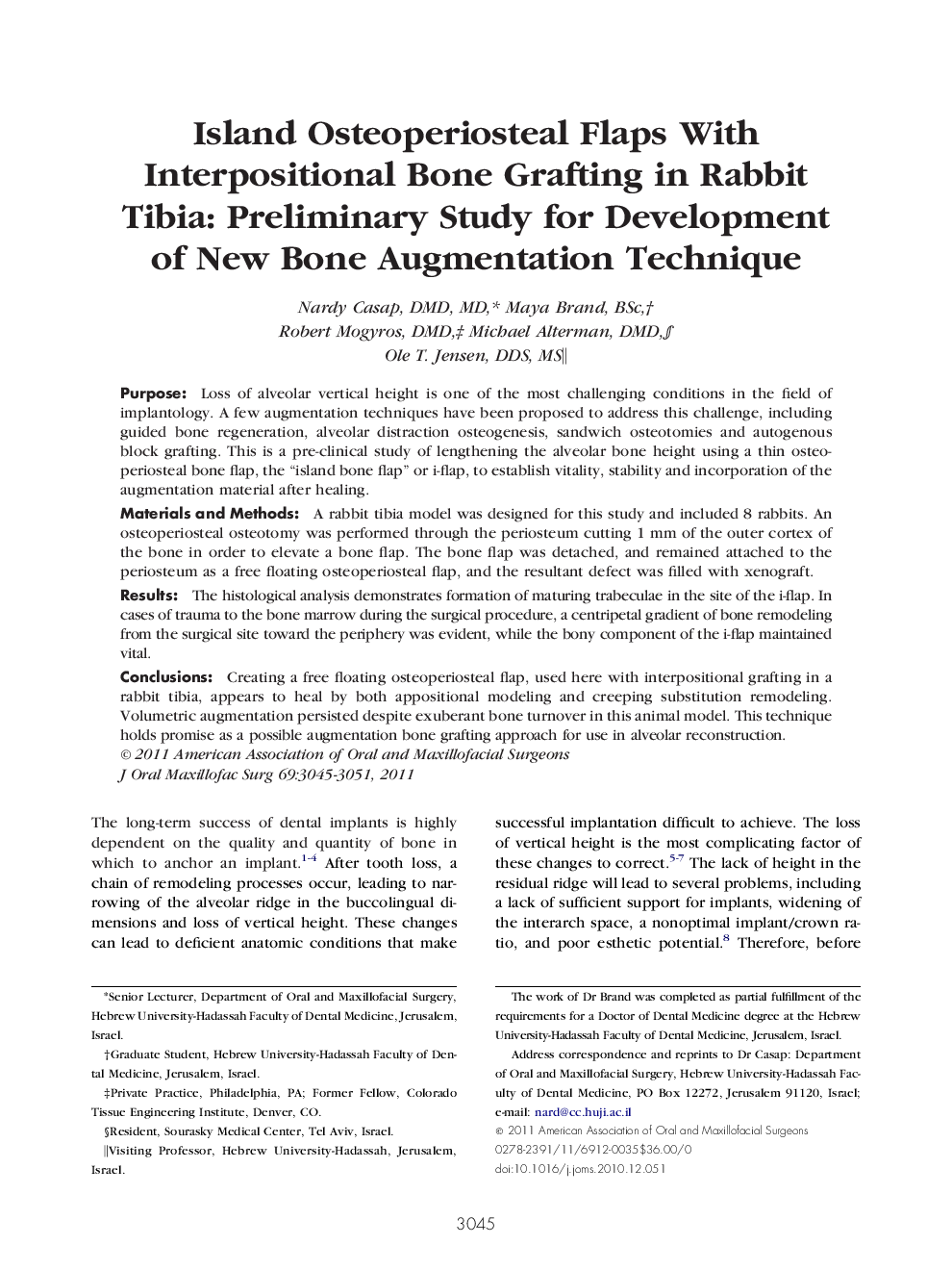| کد مقاله | کد نشریه | سال انتشار | مقاله انگلیسی | نسخه تمام متن |
|---|---|---|---|---|
| 3154453 | 1198048 | 2011 | 7 صفحه PDF | دانلود رایگان |

PurposeLoss of alveolar vertical height is one of the most challenging conditions in the field of implantology. A few augmentation techniques have been proposed to address this challenge, including guided bone regeneration, alveolar distraction osteogenesis, sandwich osteotomies and autogenous block grafting. This is a pre-clinical study of lengthening the alveolar bone height using a thin osteoperiosteal bone flap, the “island bone flap” or i-flap, to establish vitality, stability and incorporation of the augmentation material after healing.Materials and MethodsA rabbit tibia model was designed for this study and included 8 rabbits. An osteoperiosteal osteotomy was performed through the periosteum cutting 1 mm of the outer cortex of the bone in order to elevate a bone flap. The bone flap was detached, and remained attached to the periosteum as a free floating osteoperiosteal flap, and the resultant defect was filled with xenograft.ResultsThe histological analysis demonstrates formation of maturing trabeculae in the site of the i-flap. In cases of trauma to the bone marrow during the surgical procedure, a centripetal gradient of bone remodeling from the surgical site toward the periphery was evident, while the bony component of the i-flap maintained vital.ConclusionsCreating a free floating osteoperiosteal flap, used here with interpositional grafting in a rabbit tibia, appears to heal by both appositional modeling and creeping substitution remodeling. Volumetric augmentation persisted despite exuberant bone turnover in this animal model. This technique holds promise as a possible augmentation bone grafting approach for use in alveolar reconstruction.
Journal: Journal of Oral and Maxillofacial Surgery - Volume 69, Issue 12, December 2011, Pages 3045–3051